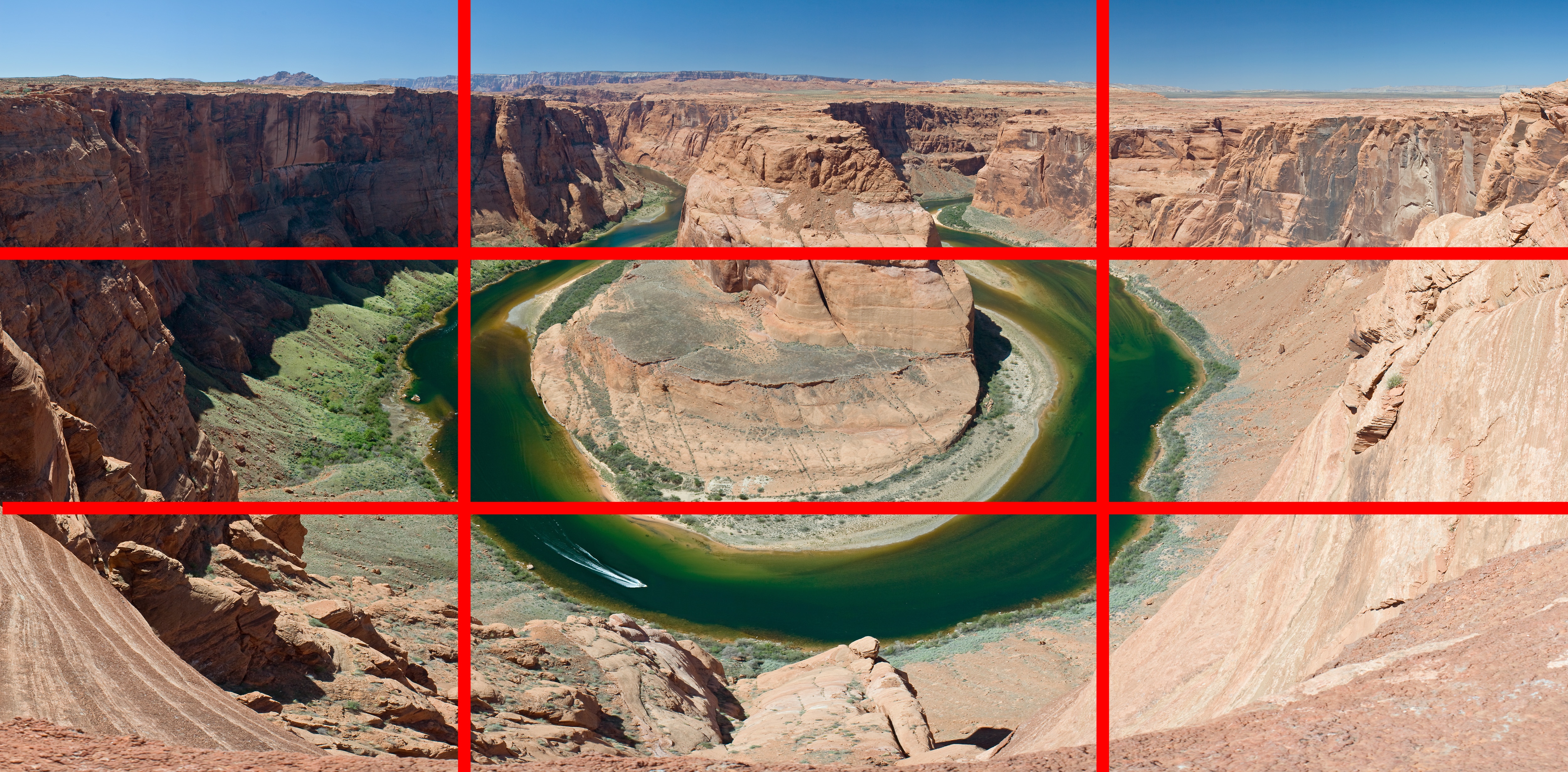
Elements of composition are like the spices and ingredients used in cooking. They should not be considered as rules. Instead, they are some of the key ingredients which make a frame look perfect.
So here is some guidance that would let you know more about composition.
1. Leading Lines

Leading lines are the type of lines that directly connects with the subject or theme of the photograph. For instance, if you are photographing The Taj Mahal, and capture the line of fountains leading to it, your viewer gets a direction to look at leading to the monument. Thus, there is a complete story within the photograph. But if you just capture the monument, then there is no action or story associated with the photograph. It might be less connecting for the viewers.
#2. Rule of Space:

The rule of space in photography creates a sense of suspense within the photograph. For example, if you are capturing a portrait in which the subject is looking somewhere else rather than looking into the camera, it creates an illusion in the minds of viewers that some sort of space is there, or something is there that garbs the subject’s attention and this illusion creates eagerness among the audience and attract their attention towards your photograph.
#3. Perspective:

If we talk about perspective in photography, it means looking at a particular subject from a different point of view. Perspective in photography depicts the dimension of the object and spatial relation between them. Howsoever, it also relates the positioning of the human eye in relation to the object in the photograph. For example, if you hold a flower in your hand and want to photograph that from a low angle, it will give a different perspective as compared to a high angle or top angle shot. So similarly, this rule applies in different forms of photography too. The photography perspective can change the way an object looks depending on the object’s size and the distance of the object from the camera. This is because perspective is determined not by focal length, but by the relative distance between objects.
#4. Balance and Symmetry:

By using the term balance we mean visual balance bringing certain stability and harmony to an image; whereas, in certain cases, an unbalanced composition can make an image feel dynamic and energetic. Because visual balance imparts a certain feel to an image, a photographer can and will choose to make the scene balanced or unbalanced to help express the meaning behind the photograph. A perfect example of balance is symmetry, where one half of an image is identical or nearly identical to the other. It’s worth noting that symmetry can create a static image, which is not always desired. Also worth noting is that if you are trying to achieve symmetry in an image, you need to work hard to nail the effect. Sometimes, the slightest misalignment can be very distracting in an image. For example, if you are creating a symmetrical photograph of a building, be sure to stand precisely at a center point and keep the camera perpendicular to the face of the building. If you are half a step off to one side or have the camera just off the 90-degree angle, lines will deflect in the image.
#5. Shapes, Patterns, and Textures:

Shapes, patterns, and textures are everywhere.
We just need an eye to find them. Including these effectively and creatively in a photograph can bring out mesmerizing results. Repetition of a certain shape leads to patterns. You may either choose to emphasize a pattern or break it. Breaking often helps in introducing an object amidst a repetition, thus highlighting the object. Textures on the other hand can give a three-dimensional look to a photograph. The angle at which lights fall on a texture leads to a 3-D look.
#6. Rule of Thirds:

Rule of thirds is one of the most important aspects of photography. The principle of the rule of thirds will give you imaginary horizontal and vertical lines within the frame and the subject should always be placed on the side of the frame rather than placing it [subject] in the center. The vision behind this principle is that our human eyes find those things attractive that are placed on either side of it as compare to the subjects which are in the center. So whenever you are out with your camera, set your camera settings into grid mode; this will help you capture the photo with the subject placed at the ideal point.
#7. Depth of Field:

Using a shallow or sharp depth of field plays a very important role in storytelling through photography. If you use a shallow depth of field, the subject is enhanced and it stands out from its surroundings. This kind of photograph is seen in macro photography/portrait photography/sports and wildlife photography etc. On the contrary, if you are using a sharp depth of field, you wish to include the subject as a part of its surroundings. Thus, the subject as well as the surrounding both are of equal importance for the viewer. This kind of photograph is seen in landscape photography.
Hope this post helps you in understanding the elements of composition which will help you as a photographer to click great photographs. In case you wish to learn more, you may fill the form below with your query and we shall get back to you soon.
HAPPY PHOTOGRAPHING, FOLKS!

Very well written
Excellent n informative write up. All the best wishes.